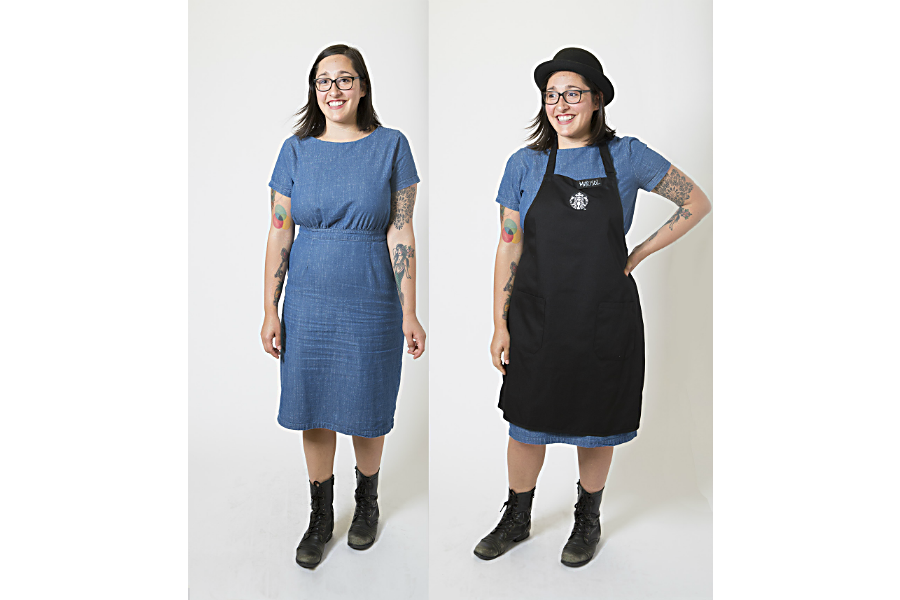Starbucks now lets baristas sport pink hair, fedoras
Loading...
The next barista to hand you your Starbucks frappucino might be sporting purple hair, a plaid shirt, or a fedora.
These accoutrements are part of the coffee powerhouse’s expanded dress code it announced Monday. The company “invites baristas to shine as individuals while continuing to present a clean, neat, and professional appearance," it said in a press release.
Starbucks’s new dress standards show the company's emphasis not just on casualness, but also on individualism. And it’s a trend not exclusive to the coffee chain. Employers across different industries are offering more lax dress codes, enabling their employees to express themselves, rather than requiring them to subscribe to the identities their jobs may impose on them.
“There’s a strain of thought that says an employee represents a company, and thus dress is not about personal expression, but company expression,” Susan Scafidi, a law professor at Fordham University and founder of the Fashion Law Institute, told The New York Times. “But there’s a counterargument that believes because we identify so much with our careers, we should be able to be ourselves at work.”
Starbuck’s 15-page booklet that describes its new dress guidelines emphasizes the latter. Baristas will continue to wear green or black aprons, with the siren logo stitched onto the chest. Underneath, however, they can wear different dark or patterned shirts, and a variety of different pant colors, ties, and fedoras.
There are restrictions. No loud shirts or pants, no baseball caps, and no bucket hats. Bright hair colors including purple or pink are kosher, as long as the color is permanent or semi-permanent.
“We like it,” said Mario Leon, store manager of the restaurant at 47th and Broadway in New York City, which tested the new dress code. “We’re happy to see that you can wear expressive clothing to show who you are.”
This isn’t the coffee chain’s first update to its dress guidelines. In 2014, it required employees cover their tattoos. Shortly afterward, it lifted this requirement.
Changes at Starbucks are part of a much broader pattern. The trend toward casual dress that started as Aloha Fridays in Hawaii in the 1960s and Casual Fridays everywhere else has become standard office behavior. It’s more normal to see Facebook’s Mark Zuckerberg wearing a gray t-shirt, hoody, and sneakers, than a double-breasted suit.
The transition wasn’t smooth, however. Sen. Mitch Holmes (R) of Kansas, for instance, was forced to publicly apologize for the dress standards he set for the Senate Ethics and Elections Committee he chaired. He barred women from “low-cut necklines and miniskirts,” but set no restrictions for men. A 44-page booklet for UBS (Union Bank of Switzerland) in 2011 famously included guidelines on shoulder width of a jacket and color of underwear.
“Today, we are speeding down it at breakneck pace, partly thanks to the hot-button conversation around gender equality, and fluidity,” wrote Vanessa Friedman for the New York Times.
The new dress code at Starbucks, in part, is an effort to remain competitive. In a tight labor market, employees can demand more freedom of expression.
“Companies are having to be more creative about how they attract people,” Brandi Britton, OfficeTeam’s district president, told the Los Angeles Times. “One way is not just offering good compensation, but other perks, and employees today see dressing less formally as a perk.”
In an OfficeTeam survey, it found 58 percent of respondents prefer business casual dress code or a casual dress code.
But it’s not just employers who have demanded change. Customers feel more comfortable around workers dressed more casually.
“The clients themselves you might be visiting are uncomfortable when – quote – the suits show up,” said Ms. Britton.
So how did Starbucks customers react in the store Mr. Leon manages in New York? It might take some getting used to.
They noticed right away, said Leon. “They actually thought that something was wrong. They would ask me, ‘Why are you guys all out of uniform?’ And we just told them, ‘No, this is the new uniform.'”







